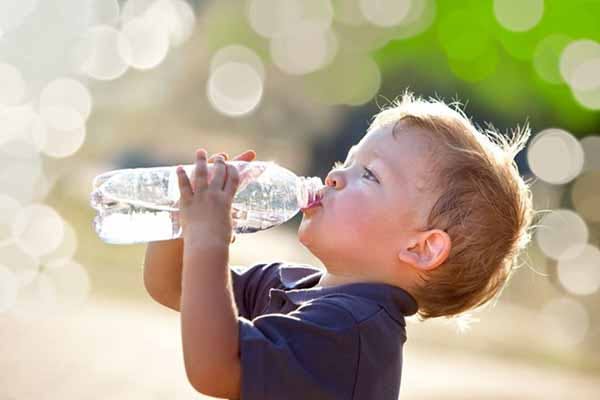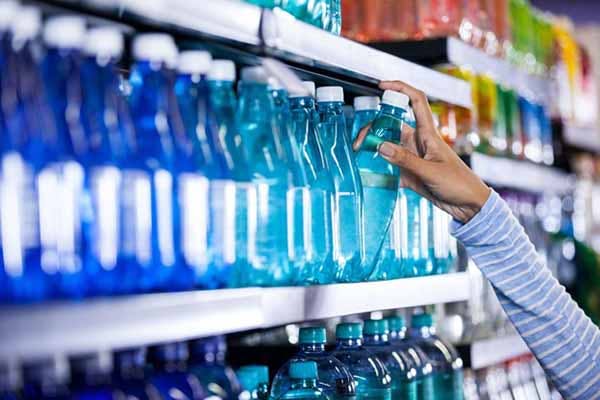April 2022
Everything You Need To Know About Plastic Water Bottles: The Environmental and Health Impacts
Drinking plenty of water is one of the best things you can do for your health. Humans need water because we consist of water. An adult male's body consists of 60% water, while women are around 55%. Staying hydrated helps your body work how it should. Even mild dehydration can cause ill effects like headaches and constipation.
U.S. consumers purchased nearly 16 billion gallons of bottled water in 2021. Commercially bottled water is convenient. It’s also less expensive than coffee, juice, and soda.
While hydration is essential, the bottled water industry negatively impacts the environment, our health, and our wallet. Learn more about plastic water bottles and why filtered tap water is the healthier, cleaner choice.
Is Bottled Water Bad for the Environment?
The waste created by discarded plastic water bottles has a devastating environmental effect, between a low recycling compliance rate and a high carbon footprint. Let's take a closer look at how single-use plastic bottles hurt the environment.
Most Plastic Water Bottles Aren't Recycled
While many consumers have the best intentions, the recycling system faces many challenges in the U.S. It isn't always clear how we should separate recyclables. This confusion leads to trash contaminating recycling bins and plastic bottles winding up in the landfill. According to the Environmental Protection Agency (EPA), we recycle fewer than one-third of all plastic bottles.
Plastic Water Bottles Pollute the Ocean
Plastic bottles that aren't recycled, burned, or placed in landfills can make their way into our oceans. Plastic in our oceans isn't just ugly; it's destroying marine ecosystems and causing havoc for sea life. Unlike paper or cardboard, plastic made from polyethylene terephthalate (PET) doesn't biodegrade or decompose. Instead, these bottles break down into smaller pieces over centuries. It would take a plastic water bottle approximately 450 years to break down naturally.
Microplastics Contaminate Sea Life
Ocean waves and currents will eventually break discarded plastic bottles into tiny pieces, creating a new marine hazard known as microplastics. Microplastics are plastic bits smaller than 5 millimeters long, and a staggering amount fills our oceans.
These tiny plastic solids are dangerous because birds, fish, and other sea creatures often mistake the particles for food. One study on the Atlantic Ocean found an alarming amount of microplastics inside certain species of squids.
Transporting Bottled Water Leaves a Large Carbon Footprint
There's also a subtler way that bottled water consumption is terrible for the environment. Water is heavy and expensive to transport. One gallon weighs just over 8 pounds.
After companies collect water from its source, it goes to the bottling plant. Water companies ship the product by truck to distribution centers and grocery stores. This lengthy process creates unnecessary greenhouse gas emissions and increases our carbon footprint. Imported water adds a several-thousand-mile boat ride into the equation. Compare this to tap water, piped directly into your home with far fewer greenhouse gas emissions.
Is There BPA in Plastic Water Bottles?
Despite known health risks, companies still use bisphenol A (BPA) in plastic water bottles. The Food and Drug Administration (FDA) only banned BPA use in baby bottles, sippy cups, and formula packaging. While some bottled water manufacturers choose to use BPA-free packing, the law doesn’t require them to do so in the U.S.
Several studies have shown that BPA may cause numerous health problems. Research links this chemical to hormonal dysfunction, infertility, cancer, and heart conditions. According to the Centers for Disease Control (CDC), detectable levels were found in 93% of people age 6 and older.
Do Plastic Water Bottles Cause Cancer?
Breastcancer.orgdescribes BPA as "a weak synthetic estrogen" and a "hormone disruptor." Research shows that at certain levels, BPA can cause cancer in some individuals. Many people reduce their exposure to BPA by not using plastic water bottles or other plastic food containers.
What Is the Best Material for a Reusable Water Bottle?
We've already discussed the potential dangers of single-use plastic water bottles. A reusable water bottle offers the same convenience and allows you to take your filtered water on the go. What features are essential when you choose a reusable water bottle?
You should opt for glass water bottles if you want the clean, crisp taste of your water to come through. Glass doesn't retain flavors or odors like other materials, so you won't experience an unpleasant aftertaste. But glass does have the downside of being heavy and breakable. Another eco-friendly option is stainless steel, but you'll want to check that another material like plastic doesn’t line the inside.
Whatever you do, don't make the mistake of reusing single-use plastic water bottles. You might feel less guilty about getting several uses out of a plastic water bottle, but there are dangers to your health. Over time, screwing and unscrewing the cap can release microplastics into your water. These bottles can also become a breeding ground for bacteria as their small openings make them challenging to clean.
Where Does Bottled Water Come From?
Consumers purchase about 50 billion bottles of water per year in the U.S. alone. Many people view bottled water as a healthier option over calorie-laden sodas like Coca-Cola and caffeinated energy drinks.
There are countless brands of bottled water on the market today. An Amazon search for "bottled water" brings up over 400 results.
In 2008, the now-defunct water brand Tap'd NY made headlines when it promoted — even boasted — that its product was nothing more than New York City tap water. That may sound crazy today, but the source of some popular bottled water brands may surprise you. Many other bottled water companies also use tap water but aren't as vocal about it.
Aquafina bottles its water at "public water sources" throughout the U.S. and Canada. The company purifies tap water via reverse osmosis and then sells it at a significant markup. You can achieve the same effect at home by purifying your home's tap water with a water pitcher or an under counter water filter. Other bottled water brands that source from municipal water systems include Nestle Pure Life and Dasani.
Unfortunately, many people drink their home's tap water without filtering it. Even though this water is safe to drink, it can have an odor or taste that some people find unpleasant. Whole home water filters use the same processes as commercial companies, without the inconvenience and ongoing expense. While a home water filtration system has a higher upfront cost, it’s an investment that will pay for itself over time.
What Is the Difference Between Purified, Spring, and Mineral Water?
Now that you know some companies use municipal water sources, you might wonder what the difference is between the various types of water. The bottled water industry uses many terms to describe its product. Some of these labels are confusing or can even be misleading.
Mineral Water
Companies source mineral water from springs or underground aquifers. The selling point of this water is its mineral content. Popular mineral water brands like Fiji Water, Voss Artesian Water, and Perrier contain higher magnesium, potassium, calcium, and other mineral levels. Evian is perhaps the most famous mineral water brand, which the company sources from the French Alps.
Purified Water
Any water that’s processed to remove contaminants and impurities is purified water. You can purchase purified bottled water like Dasani or Nestle Pure Life. But the wiser choice — from an economic and ecological perspective — is to purify your home's tap water. An under sink or whole home water filtration system saves money and reduces waste.
Spring Water
Mountain Spring, Mountain Valley, and JUST Water are commercial natural spring water brands. Companies collect this water where underground aquifers overflow to the surface. Poland Spring, for example, sources water from a spring in Maine.
Alkaline Water
Regular water has a pH level of 7. Alkaline water brands like Essentia, Bai, and Icelandic have a higher pH level and contain specific minerals. Proponents of alkaline water claim that it has health benefits such as detoxifying and cancer-fighting properties. Higher pH levels can occur naturally or through water electrolysis.
Distilled Water
While it's safe to drink distilled water, you'll probably find it has a bland and unappealing flavor. The distilling process removes electrolytes and other micronutrients, leaving only hydrogen and oxygen behind. There's no reason to seek distilled water to drink, but some appliances like clothes irons and CPAP machines require it. Distilled water lacks the minerals that cause scale buildup.
Is Bottled Water Safer Than Tap Water?
Despite public perception that bottled water is healthier than tap water, this isn't necessarily the case. While the Environmental Protection Agency regulates and monitors tap water, there are fewer bottled water regulations. Commercially sold bottled water can still become contaminated during the collection and bottling processes. And remember that some bottled water companies sell municipal water, the same water people get when they turn on their faucets.
What Is the Best Bottled Water to Drink?
While bottled water is great for the companies that sell it, the truth is that it's expensive, is potentially bad for your health, and is an ecological disaster for the planet. No bottled water brand can match filtered tap water's convenience and affordability.
You can achieve the same filtration process at home at a fraction of the cost. Under-sink and whole-home filtration systems give you on-demand clean and refreshing water. These systems remove substances that affect the flavor and odor of tap water, like chloride, microplastics, lead, volatile organic compounds (“VOCs”) and PFOAs. All that’s left behind is crisp, delicious water. Contact HomeWater to choose a home water filtration system that is right for you.
Brought to you by homewater.com
All images licensed from Adobe Stock.
Featured Image

